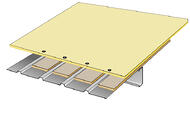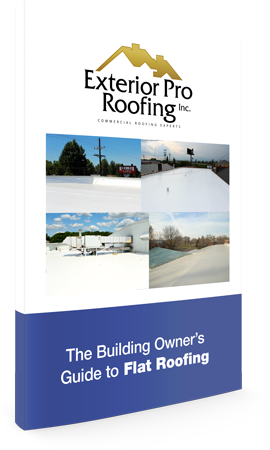These are the top 4 Factors that dictate the cost of a flat roofing project in 2015. By understanding what drives cost in flat roofing you can more accurately plan and budget for your next re-roofing project.
1. Tearing Off A Flat RoofHaving a flat roof removed is one of the biggest drivers of cost to a roofing project in 2015. Tearing off a flat roofing can be 50% or more of the total cost of re-roofing a building. Tearing off a flat roof requires much more labor, larger crew sizes, more disposal cost, adds time to project completion date, and the flat roofing contractor needs clear weather before exposing the building. It’s easy to see how a tear off quickly adds cost to a roofing project, it’s much more work.
For this reason many single ply roofing manufactures such as Duro-Last, Carlisle, and Sarnafil are designing PVC roofing membranes that are intended to lay over older roofing systems thus saving the building owner the cost and headache of a flat roof tear off. One of the major stipulations of doing a flat roof lay over is that the roofing insulation and / or deck not be saturated. Building owners who allow flat roofs to leak for extended periods of time are not only going to incur cost associated with a tear off when they finally do decided to re-roof, but will also endure the cost or replacing the wet insulation.
Being proactive towards maintaining and replacing a building’s flat roof can equal big savings.
5 Factors to consider before you replace a flat roof
2. Poly ISO Roofing Insulation

Most building owners or project managers often miss calculate the cost that roofing insulation adds to a flat roofing project. In 2015, 1 Sq. Ft. of poly ISO roofing insulation 1” thick has an average cost of .41 cents. That means to reach most standard commercial building R-values of R-30, you will need at least 5 inches of poly ISO board. 5” inches of ISO at .41 per Sq. Ft. equals an additional $2.05 per Sq. Ft. not even including the cost of installation, shipping, and material handling.
This is another very large advantage of doing a membrane lay over of your existing roof if it is not saturated with moisture. The building owner can save the cost of new insulation by leaving the existing insulation in tact.
3. Metal Copings and TrimsAnother area that dictates cost on a project is metal coping and trims that can be used to dress up a building. Metal copings and trims not only seal the perimeter of a building and tops of parapet walls, they add curb appeal and design to a facility. Coping caps and metal trims cost much more than termination bar and caulking but they mean a long lasting, watertight seal while adding the aesthetics of a building.
4. Type of membrane
The forth factor that will affect the price of a new flat roof in 2015 is the type, thickness, and warranty associated with the roofing membrane you select for your building. Most major roofing membrane manufactures have warranties that are 15 year, 20 year, or 25 year long in duration. As you increase the length of the warranty you must also increase the thickness of the membrane. For example, a .40 or .45 mil roofing membrane will generally give a 15 year NDL or no dollar limit warranty, where as a .50 mil or 60. membrane will come with a 20 year NDL. In most cases to achieve a 25 year warranty on a flat roof you will need to increase the membrane thickness to .80 mil.







